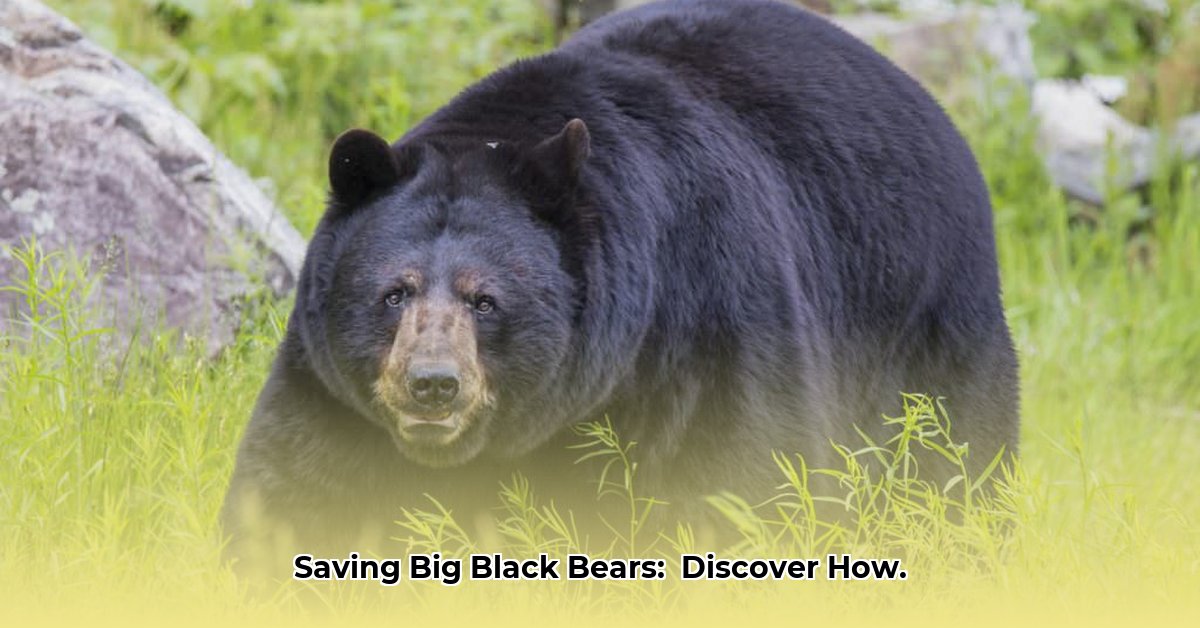The Mounting Challenges Facing American Black Bears (Ursus americanus)
American black bears, despite their adaptability, face escalating threats from habitat loss, human-wildlife conflict, and the far-reaching impacts of climate change. These pressures jeopardize their survival and necessitate proactive conservation strategies.
- Habitat Loss and Fragmentation: Urban sprawl, resource extraction, and infrastructure development shrink and fragment bear habitats, increasing the likelihood of human encounters. This forces bears into smaller, isolated areas with limited resources, exacerbating competition and potentially driving them closer to human settlements. The consequences can be dire for both bears and humans.
- Human-Wildlife Conflicts: Unsecured attractants like garbage, bird feeders, pet food, and agricultural crops lure bears into human-dominated landscapes. This habituation erodes their natural fear of humans, leading to property damage, dangerous encounters, and often, the euthanization of the bear. Practical solutions and community education are key to mitigating these conflicts.
- Climate Change Impacts: Shifting weather patterns, increased drought frequency, and intensified wildfires disrupt the delicate balance of bear ecosystems. These changes impact the availability of key food sources like berries, nuts, and salmon, forcing bears to range further in search of sustenance, increasing the risk of conflict with humans.
A Multifaceted Approach to Black Bear Conservation
Addressing the complex challenges facing black bears requires a collaborative and adaptable strategy involving various stakeholders.
- Minimizing Human-Bear Conflicts: Implementing practical preventative measures is crucial. This includes using bear-resistant garbage containers, removing bird feeders during peak bear activity, employing electric fencing to protect crops and beehives, and storing pet food indoors. Public education campaigns emphasizing responsible behavior in bear country, such as proper food storage and waste disposal, are essential for fostering coexistence. Furthermore, promoting non-lethal deterrents like bear spray and noisemakers can help prevent dangerous encounters.
- Habitat Preservation and Restoration: Protecting and expanding existing bear habitats is paramount. Establishing wildlife corridors connecting fragmented areas allows for genetic exchange and reduces the risk of inbreeding. Restoring degraded habitats through reforestation and promoting native vegetation ensures access to crucial food sources and provides safe havens. Supporting land conservation initiatives and advocating for responsible land-use planning are critical for long-term success.
- Adapting to a Changing Climate: Integrating climate change projections into bear management plans is essential for proactively addressing future challenges. This includes anticipating shifts in bear distribution and behavior due to changing resource availability. Diversifying food sources through habitat management and promoting connectivity between different habitats can enhance resilience. Monitoring bear populations and their health will be crucial for evaluating the effectiveness of adaptation strategies.
- Research and Monitoring: Investing in scientific research is fundamental to effective conservation. Studying bear populations, their movement patterns, genetic diversity, and the impact of climate change informs management strategies and helps identify critical habitat areas. Ongoing monitoring of bear health and the prevalence of diseases provides valuable data for proactive intervention. Furthermore, research into bear behavior and human-bear interactions helps refine conflict mitigation techniques.
Securing the Future of Black Bears: A Shared Responsibility
Protecting American black bears is a shared responsibility. Government agencies, wildlife managers, conservation organizations, landowners, local communities, and researchers must work together to implement these strategies. Collaboration through data sharing, coordinated management efforts, and community engagement is crucial for maximizing effectiveness. Individual actions also matter. Supporting conservation organizations, advocating for bear-friendly policies, and promoting responsible behavior in bear country are all essential contributions. By working together, we can ensure the survival of these magnificent creatures for generations to come.
- Unlock Water’s Symbolism: A Cross-Cultural Exploration - April 20, 2025
- Identify Black and White Snakes: Venomous or Harmless? - April 20, 2025
- Unlocking Potential: Origins High School’s NYC Story - April 20, 2025















